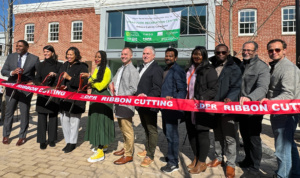How Connection Drives Productivity and Engagement for the Hybrid Workforce Generation

Sourced from BenefitsPro
by MGAC’s Bryan Otte – November 20, 2023
As the workplace landscape continues to shift and take new forms in a post-pandemic world, companies around the globe are exploring the varying benefits and disadvantages to remote and hybrid workplace models in comparison to more traditional in-office environments. Where some companies are skeptical of remote work and doubling down on the need for their workforce to convene in-office, others are exploring blended or hybrid models, while proud remote adopters champion a virtual-only workforce blueprint.
While the jury is still out on whether any one particular workplace dynamic is objectively advantageous over another, there is one universal truth that has surfaced: a virtual disruption is well underway, with long-term impacts on interpersonal connection yet to be understood.
Among HR leaders, there is growing concern around how associate engagement, connection, and culture are being impacted, and in turn, how this impact will inform not only the current generation’s landscape, but workforce generations to follow.
So, how do HR leaders prepare for the future of tomorrow while honoring the workforce of today?
They do what they’ve always done: employ a human-first, personal approach that supports the individual and ensures their success as a means of supporting collective enterprise objectives. As HR leaders look to address rumblings of disengagement, distrust, and dissatisfaction in correlation to evolving work environments, the following are a few key areas worthy of attention when considering an emphasis on the value of workplace connection, whether hybrid, remote, or in-office.
More than an office, a lifestyle
For many associates, the brick-and-mortar workplace has traditionally operated as a central hub for one’s day-to-day life—a second home where contemporaries build relationships with one another. Without a central in-person hub, employees may feel less anchored in their connection to colleagues, leaders, and mentors, while also feeling disconnected and disengaged from company culture.
For many younger associates in particular, the workplace is often where they build friendships, exercise interpersonal skills, and develop professionally and personally. Where their more senior counterparts tend to have established social and personal relationships at home or in the community with their families, partners, and children, younger associates tend to derive a larger percentage of their relationship modeling from the workplace. In addition, more senior colleagues have the benefit of tenured experience in a full-time, in-office position—and the relationship building and mentorship that comes from that.
Given entry-level associates comprise the future of the workforce as the first fully remote and hybrid generation, HR leaders must remain vigilant in identifying strategic opportunities and new ways of helping to mitigate remote- and hybrid-induced impediments to conducive connection. As lack of interconnection and feelings of loneliness contribute to employees’ overall satisfaction, engagement, retention, and growth, there’s increasing value to ensuring a proactive and mindful approach to supporting associates at all levels and across all mediums.
Connection, an antidote to feelings of loneliness, isolation, and distrust
While performance and productivity continue to remain key measures of professional development, there’s an emerging need to generate focus around intentional team building, trust building, and associate-to-associate connection, as it relates to overall performance and productivity.
Whether conveyed in-person or emulated in a remote format, associate-to-associate connectivity continues to prove beneficial to the overall wellbeing of employees, as well as the general health of a company. Taking thoughtful measures to foster community, shared culture, and a meaningful sense of belonging will prove even more important in a digital era where associates are more likely to experience feelings of isolation and disconnection, as day-to-day interpersonal connection inherent to an in-person office environment is lacking.
Where organic, informal opportunities to connect with others are ripe in an in-office workplace setting, they take on a very different look and feel across virtual platforms. Even simple word-of-mouth communication—a basic form of human-to-human interfacing—differs in-person versus when conveyed electronically, by video conferencing or other remote means.
In addition to solving for enhanced inclusivity, as employees spend less time face-to-face and more time connecting through virtual channels, colleagues at all levels are finding difficulty in building and sustaining trust, an integral tenant to any relationship’s ability to succeed—workplace or otherwise. With many areas of interpersonal nuance not easily translated, appearing in an unconventional pattern, or omitted altogether in remote and hybrid workplace settings, HR leaders need to work closely with managers, mentors, and fellow leaders to evaluate how productivity and success are being measured with consideration to varying degrees of modified trust.
As an antidote to loneliness, isolation, and feelings of distrust, collaboration, social connectivity, and relational bonds will continue to create a framework for positive workplace engagement and professional growth, while also encouraging and fostering personal development as the human-centered workforce progresses in its inevitable evolution, today and beyond.








